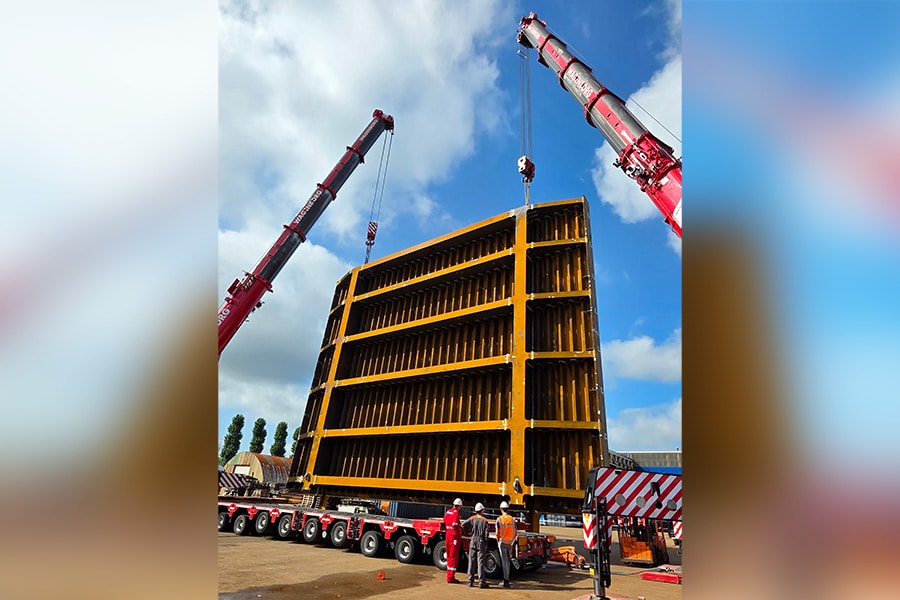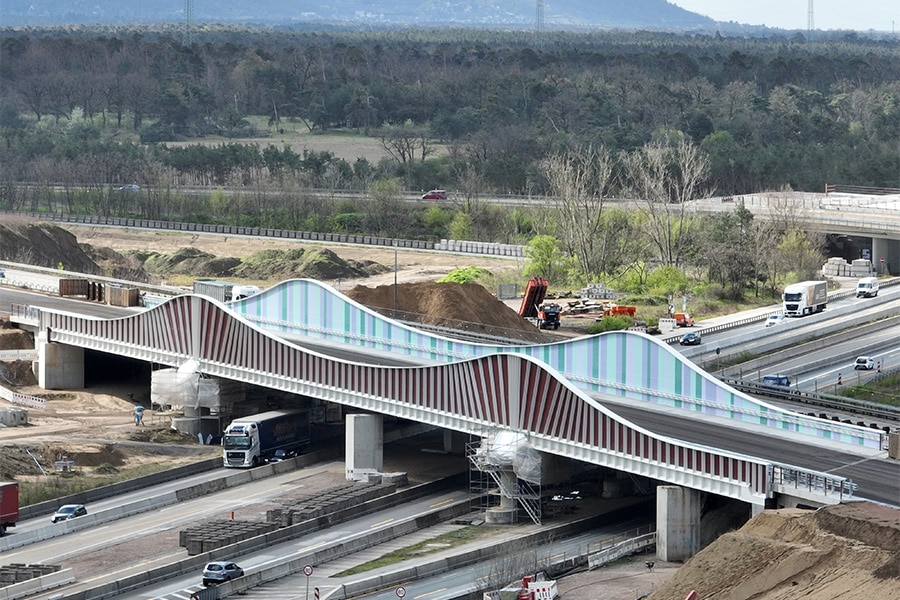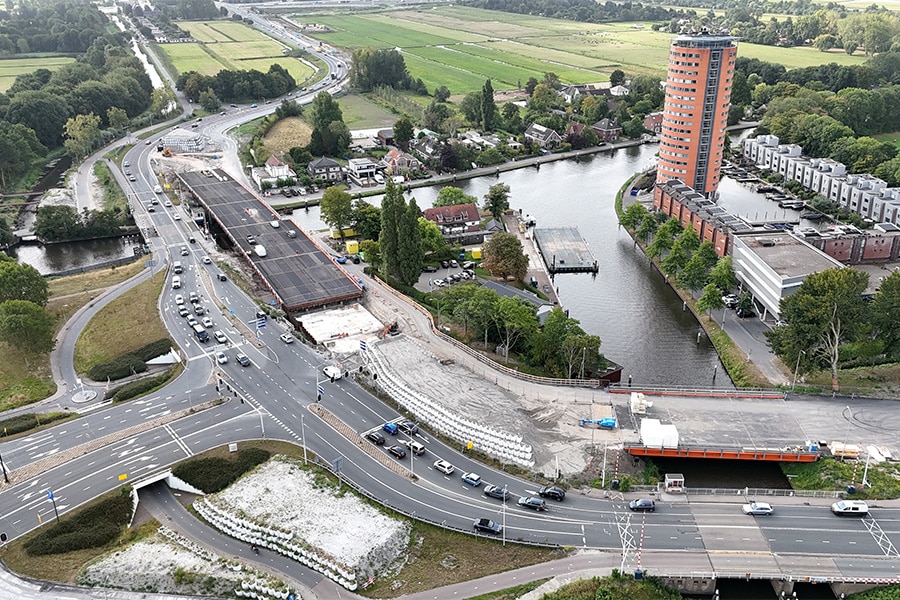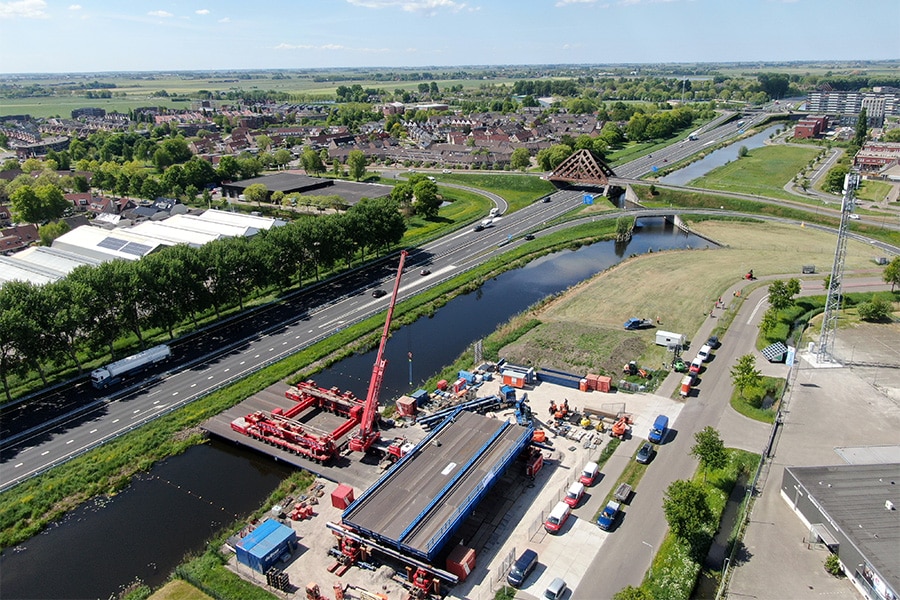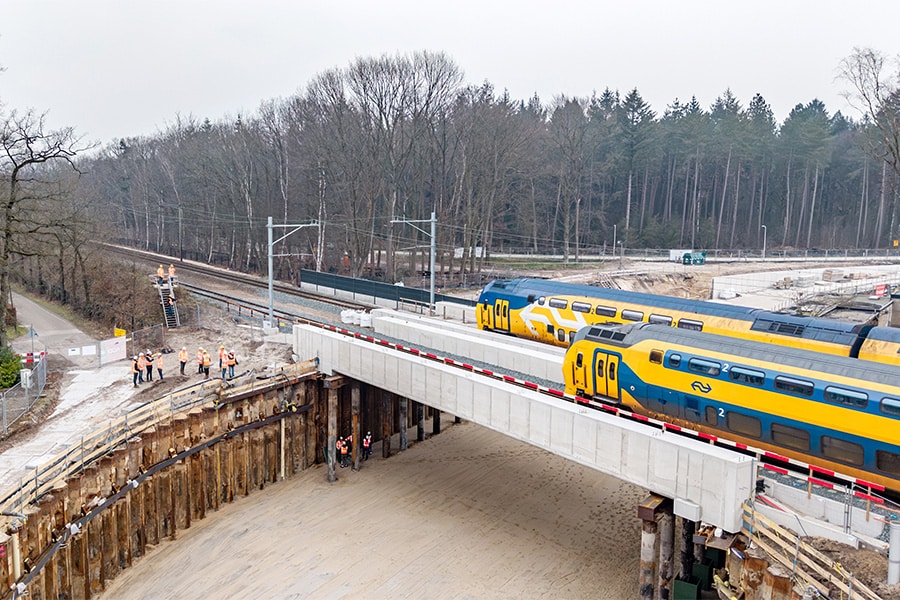
Dry feet in deep tub
In Maarsbergen, the level crossing that crosses the busy Utrecht-Arnhem railroad line is being replaced by no less than two underpasses: one for fast traffic and one for slow traffic. The first is currently in the works, and reached its deepest point last February. Thanks to sophisticated drainage by Theo van Velzen, part of Van Tongeren Watertechniek, the contractor is keeping dry feet in the tub.
The level crossing in Maarsbergen has been causing a lot of congestion and unsafe situations for years. Not only in the village center itself, but also on the nearby N226 and even on the A12 with which the N-road has a full connection. Bicycle traffic is also severely hampered by the obstructions caused by regular rail traffic in combination with the stagnating traffic flow. As more and more trains will be running on the track in the coming years, the inconvenience will only get worse. Reason enough for ProRail, the province of Utrecht, the municipality of Utrechtse Heuvelrug and the government to join forces and improve traffic safety, traffic flow and quality of life.
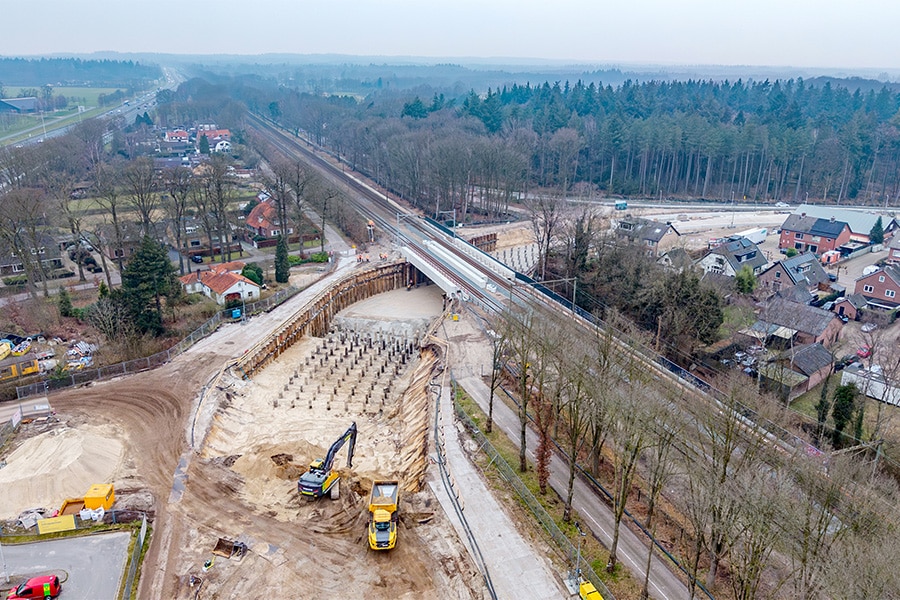
Fourteen sources
In Maarsbergen, two underpasses are being built that will lead traffic safely under the railroad. At the same time, the N226 will be relocated to the west. There, fast traffic will be led under a new underpass connecting to a new traffic circle. This underpass is currently under construction and will be completed in early 2026. Then, in May 2026, the contractor will start the underpass for slow traffic at the site of the current level crossing. "We were contracted in the preliminary phase by Hegeman Bouw & Infra for the construction of the drainage," says Frans Glorie, director of execution at Theo van Velzen. "For the first underpass for fast traffic, we drilled fourteen wells in phases."
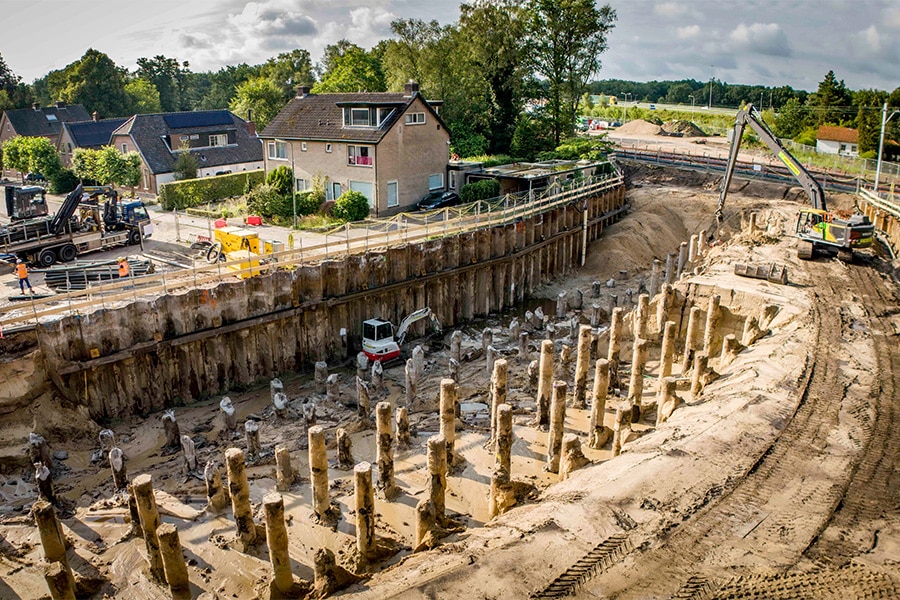
Interference layer
The construction pit of the underpass has now reached its deepest point. "The deepest point is the water cellar at 1 meter minus NAP. The average ground level here is plus 9 meters NAP. So that means the construction pit is about 10 meters deep. In contrast, our wells have been drilled to 17.5 meters below ground level down to the clay layer," explains Frans. The construction pit is nice and dry, but that took some doing. Literally. "In the first phase we had to deal with a 'disturbing layer', where there is no sand, but peat. This caused water to remain above this layer, while underneath it was dry. Initially, we didn't know that and added extra vacuum filters. At the next phase, we milled through that layer of peat."

Frequency-controlled pumps
The maximum flow rate of the pumping station is 250 m3 per hour. By the way, the pumps are all frequency-controlled. According to Frans, that provides a nice optimization in power consumption and the total amount of groundwater extracted. "The water is routed via a sweater (read: overpass) over the ramp to the highway and then passes under the highway and is discharged on the south side of the project. Motorists thus drive under the outfall. Furthermore, on the northeast side we have built another geohydrological screen using a return drainage, so that the pollution present there remains in place. The entire drainage is monitored through monitoring wells and all parameters can be viewed online by the contractor. The monitoring is performed by one of our other companies, Tjaden Consulting Company for Soil Mechanics."
Theo van Velzen's drainage system is currently running at full capacity and, according to Frans, completely trouble-free. "Our contractor Edwin Klok does visit us once a week to check everything. If necessary, a crew is deployed to make adjustments so that the contractor can continue without delay. If all goes well, the drainage can be off by the end of this year. In 2026 we will then drill another five wells for the second underpass. These will not go as deep, however, and the construction pit will require a considerably smaller drainage system with a maximum flow rate of 120 m3 per hour."
Heeft u vragen over dit artikel, project of product?
Neem dan rechtstreeks contact op met Henk van Tongeren Water & Engineering.
 Contact opnemen
Contact opnemen
